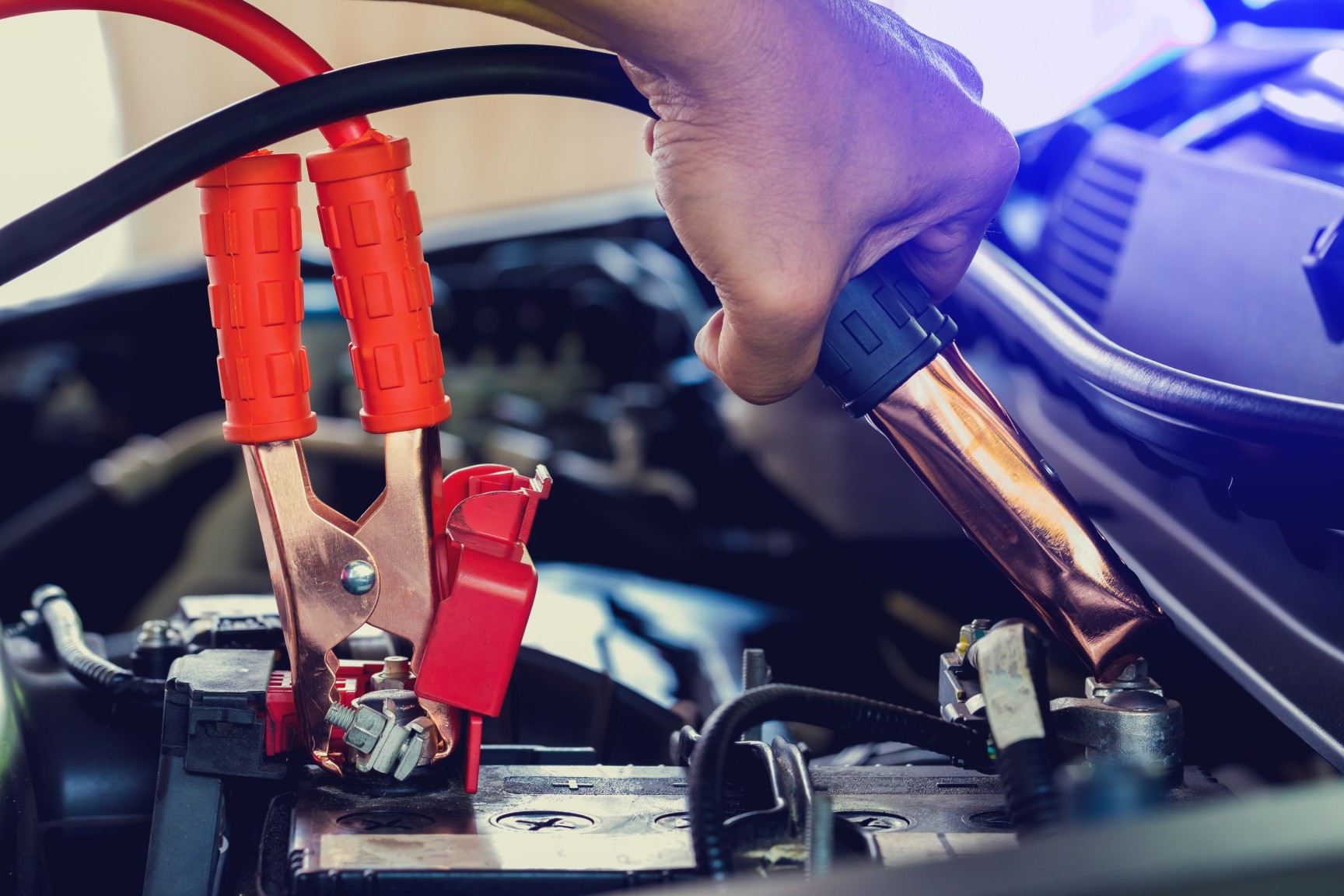12-volt batteries are used in cars to power lights, radios, and other accessories. The car’s engine generates electricity that is sent into the battery by a cable called an alternator. Electric cars don’t have engines generating electricity for their 12-volt batteries—instead, they use motors powered by energy from lithium-ion or nickel-metal hydride batteries. This article will explain why electric cars still need 12-volt batteries even though they don’t need them for propulsion.
A 12-volt battery is an electrical source that stores energy in the form of chemical energy. A standard automotive battery contains six electrochemical cells containing two electrodes (one positive, one negative). Two plates are immersed in sulfuric acid with the cathode plate coated in lead dioxide, and the anode plate consists of porous sponge lead. The chemicals in the battery react, producing electrical energy and lead sulfate. As the battery is discharged, the chemical reaction produces electricity, and when it is charged, it needs electricity to recharge. This chemical reaction takes place inside a 12-volt car battery.
Electric cars require an electrical system separate from the original 12-volt battery. A DC to DC converter changes this system to either 48 volts or 72 volts. This power is used for powering lights, radios, fans, windows, door locks, wipers, etc., and for generating torque in the electric motor. The car has a separate energy storage system, usually using lithium-ion or nickel-metal hydride batteries.
Electric cars can function on a traditional 12-volt system, and this is mostly because of how important the stereo and other electrical accessories are to people. When more voltage is needed for these devices, some manufacturers install a DC to DC converter, which boosts the voltage from 12 to 48 or 60 volts.
When the car is running, the electric motor only needs an electrical system of around 24 volts or 36 volts. An electronically controlled DC to DC converter changes this voltage, depending on speed and other factors. This way, an electric car doesn’t need a powerful battery, but the electric motor requires more voltage. It’s also cheaper to have a lower-performing battery powering the electric car than having an expensive, higher-performance one. 12-volt batteries are developed for different purposes than what you need in your average car—it’s not worth spending money on developing new products if people are still fine using traditional automotive batteries.
This is why electric cars are equipped with 12-volt batteries to handle the standard car accessories, while the vehicle has a separate battery for operating its motor.
Importance of 12-Volt Car Batteries on Electric Vehicles
1) Power Lights, Radios, Fans
12-volt batteries are used to power lights, radios, fans, and other accessories you find in your car. After the electric motor of your EV is turned off, these accessories still need electrical power. The car’s engine runs continuously while the car is being driven at cruising speeds which means it can generate electricity for powering these accessories. However, when the car slows down or is stopped, and you turn on the AC and other accessories, your 12-volt battery will deplete, and this will impact how long it takes to charge again.
2) Electric Motors Require Voltage Change
Electric motors require a specific voltage depending on what they are powering—for example, an electric motor used to power a winch requires less voltage than the one powering an electric car. This is why uses like construction sites or outdoor events use special batteries based on their needs. These batteries can provide the proper amount of electricity and can be used for different purposes without changing them—you would need several 12-volt batteries in your average EV to power different electric motors.
3) Power Reversing Camera
An electric car is equipped with a reversing camera that needs power from your 12-volt battery to operate. Without it, you won’t be able to see what’s behind your car. In order for the camera to work, you need an additional lead connected either directly or through a fuse to the positive terminal of the 12-volt battery inside the car.
4) Power Onboard Electronics and Systems
There are lots of systems and components in the car that need to be powered, like security systems, engine management, or comfort functions. These can run off an independent battery or through a conventional 12-volt lead-acid battery; the latter is used mostly when the car is not plugged into an electrical power source such as a socket at home or work.
5) Power Electric Door Locks
In some electric cars, the door locks are connected to the 12-volt system and power from this system is used to operate them. If you have an EV with a regular 12-volt battery, you’ll need to manually unlock the doors when the car is at a complete stop before opening them.
6) Power Windscreen Wipers
12-volt batteries power the windshield wipers of electric cars. If you have a low battery, it might take longer to stop snow or rain from obstructing your view while driving.
7) Power the Navigation Systems
Your car’s guidance systems can be powered by a 12-volt lead-acid battery or an independent lithium-ion battery which is charged when the car is plugged in. Some navigation systems can run off a 12-volt power supply in your EV, while others require a separate independent battery to work properly.
8) Power Interior Lights
Interior lights are usually powered by the 12-volt system of an electric car. If you are used to turning on interior lights at night, having a low 12-volt battery might cause delays in powering them.
In conclusion, a 12-volt lead-acid battery is the most common type of power supply for different systems and components in your electric vehicle. In some EVs, an independent lithium-ion battery is used as the main power supply that works alongside a 12-volt system or it can be used alone to power those accessories which don’t require a continuous uninterrupted flow of voltage for operation.






